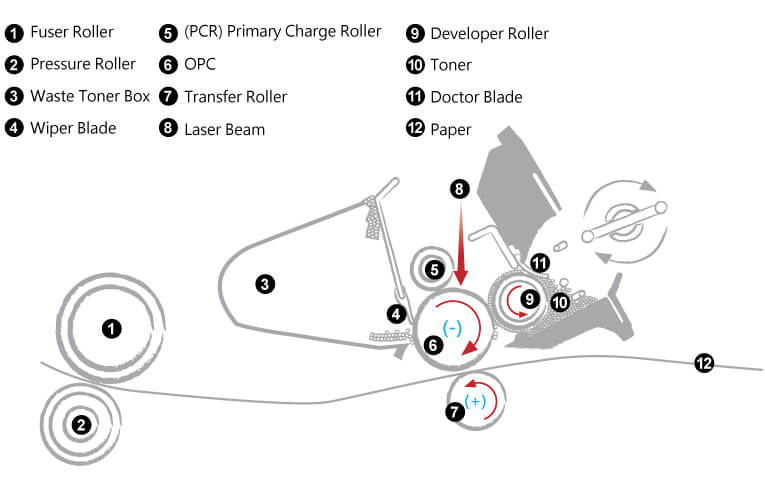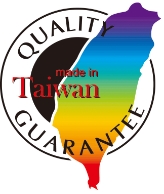
The exact step-by-step process of printer toner is below:
-
Charging:
An organic photoconductor (OPC) is charged by a primary charge roller (PCR). With the constant flow of current from the PCR, a blanket of negative charge is produced on the surface of the rotating OPC drum. -
Exposure:
The OPC surface which is evenly charged then passes a laser beam. This focused beam scans across the organic photoconductor drum and emits light which exposes the OPC one line at a time only at locations to be toned later at the development station. The laser energy activates the photoconductor and the surface charge is dissipated and forms the latent image. -
Development:
At the development station, the latent image on the OPC drum is turned into a visible toner image that will be transferred to the paper.
The developer roller and the doctor blade charge the toner with a negative charge. The toner is magnetically attracted to a 4-pole stationary magnet inside a rotating developer sleeve. The doctor blade meters the amount of toner adhering to the developer roller. An AC/DC voltage gives the toner a negative charge bias. With negative bias, the toner is attracted to the latent images (exposed areas) on the OPC drum where the charge is more positive. The toner is repelled from unexposed areas of the drum where the charge has remained negative. -
Transferring:
After development, the toner image on the surface of the OPC is brought in contact with the paper moving at the same speed. A transfer roller on the opposite side of the paper applies a positive charge to the paper causing the negative-biased toner to be attracted and transferred to the paper. -
Fusing:
The paper, along with the transferred toner image, then travels to the fuser assembly. This assembly is composed of a heated upper roller and a lower-pressure roller. During fusing, the toner particles are melted and fused to the paper. -
Cleaning:
Since a percentage of toner on the photoreceptor is not transferred, the OPC surface must be cleaned by a printer wiper blade. Any toner not transferred to the paper is deposited in the waste toner container. A recovery blade seals the area between the drum and waste toner box to prevent the toner from spilling onto the paper. -
Erasure:
In PCR-based systems, the PCR “erases” residual charges on the OPC by applying a uniform surface charge to the OPC.
Any variations in charge on the OPC surface are made uniform.
If you still have more questions about toner cartridges, please feel free to contact Cartridge Web.

